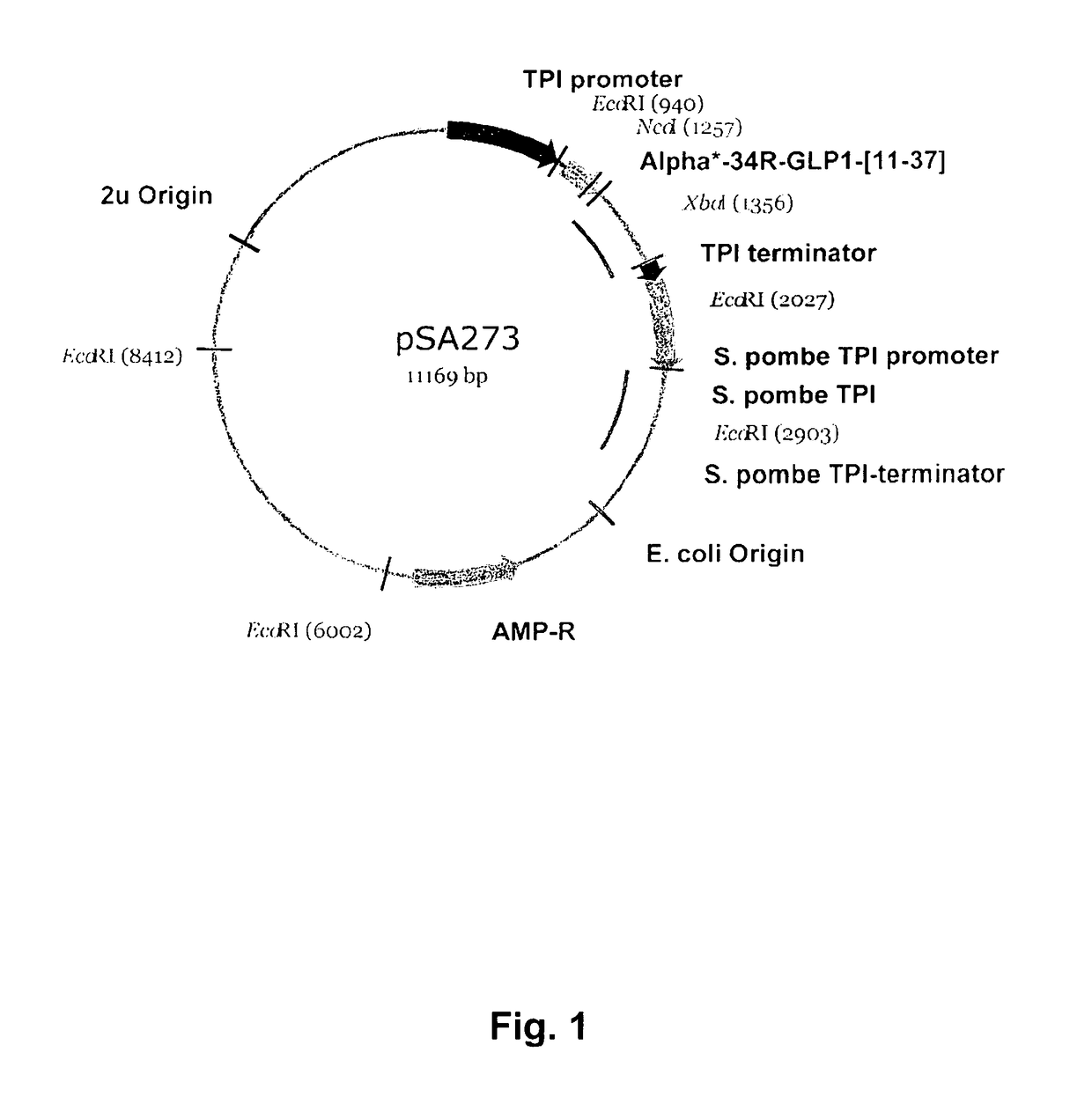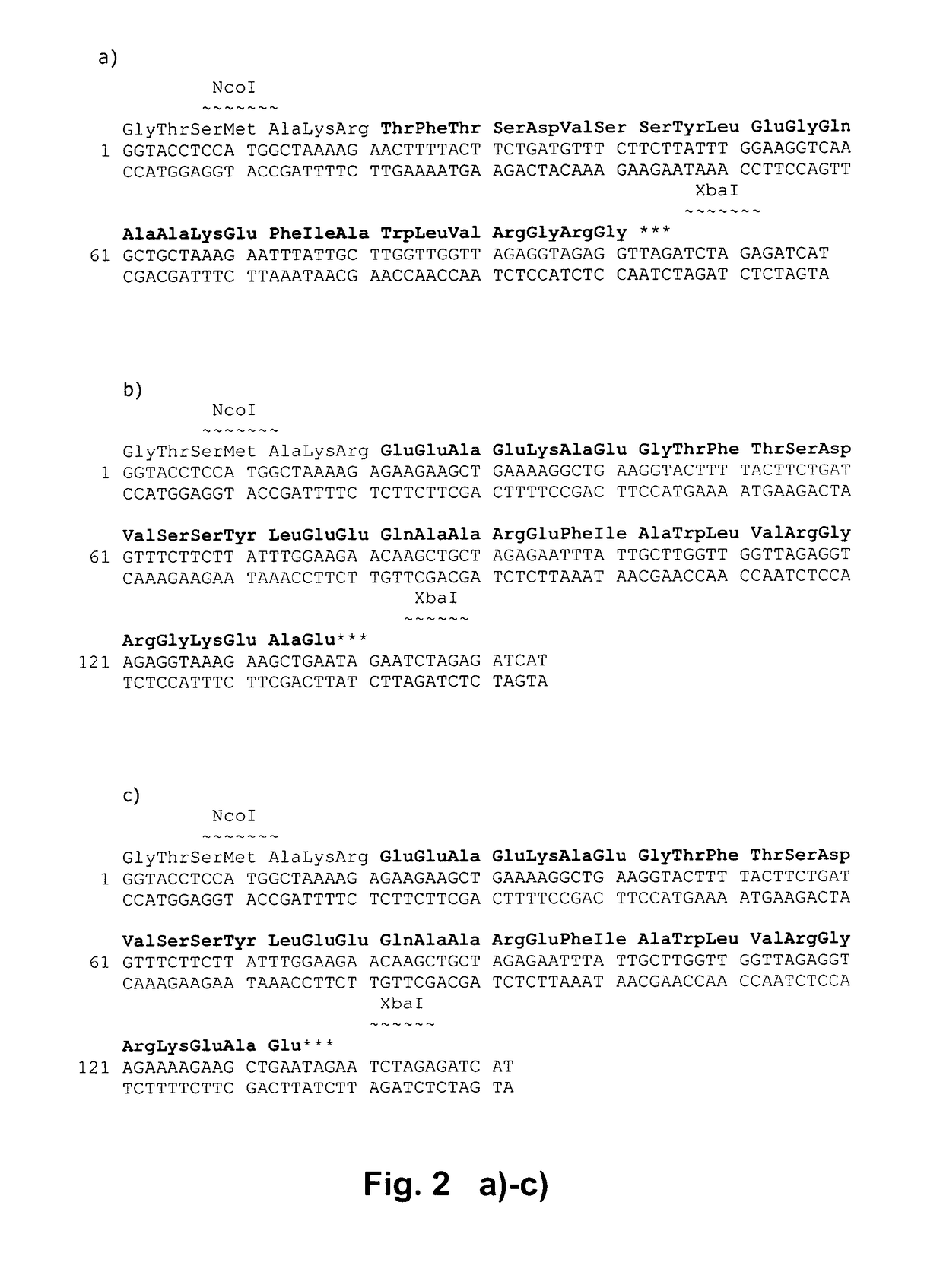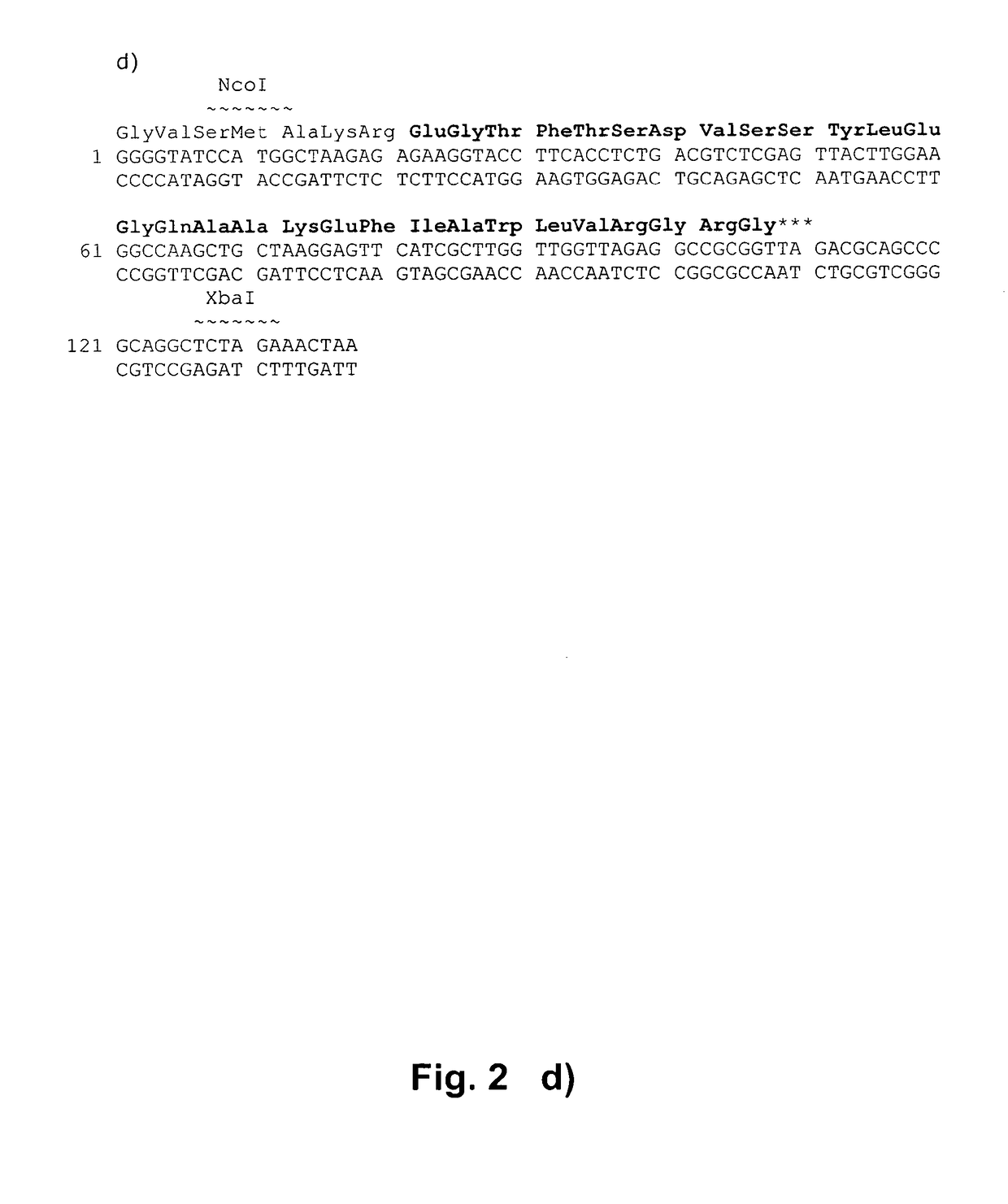Semi-recombinant preparation of GLP-1 analogues
a technology of n-terminal extension and glp-1 analogues, which is applied in the field of semirecombinant method for the preparation of glp-1 analogues and derivatives, can solve the problems of short circulating half-life, fear of injection becoming a serious obstacle, and polypeptides also containing non-proteogenic amino acids such as n-terminally extended glp-1 analogues
- Summary
- Abstract
- Description
- Claims
- Application Information
AI Technical Summary
Benefits of technology
Problems solved by technology
Method used
Image
Examples
example 1
Construction of Yeast Expression Systems and Production of GLP-1 Analogue Precursor Molecules (R34)GLP-1(8-37)
[0598]Expressions plasmids are of the C—POT type, similar to those described in EP 171,142. These are 2μ-based expression vectors characterized by containing the Schizosaccharomyces pombe triose phosphate isomerase gene (POT) for the purpose of plasmid selection and stabilization in S. cerevisiae. The plasmids also contain the S. cerevisiae triose phosphate isomerase promoter and terminator (FIG. 1). These sequences are similar to the corresponding sequences in plasmid pKFN1003 (described in WO 90100075) as are all other sequences except the following: 1) The sequence of the EcoRI-XbaI fragment encoding the fusion protein of the leader and the insulin product. 2) A silent mutation has been introduced resulting in removal of a NcoI-site in the 2μ-region in the expression vector. In order to facilitate cloning of different fusion proteins a the DNA sequence encoding the MFα1 p...
example 2
Construction of Yeast Expression System and Production of GLP-1 Analogue Precursor Molecule (R34)GLP-1(9-37)
[0603]A synthetic DNA fragment encoding (R34)GLP-1(9-37) was constructed by standard PCR using the primers 5′ -AGGGGTATCCATGGCTAAGAGAGAAGGTACCTTCACCTCTGAC-3′ (SEQ ID NO: 14) and 5′-AATCTTAGTTTCTAGAGCCTGCG-3′ (SEQ ID NO: 15) and a plasmid containing DNA sequence encoding (R34)GLP-1(7-37). The primers were designed an 5′ NcoI site and a 3′ XbaI site. Thus the PCR fragment could be digested by NcoI and XbaI after purification and ligated to the NcoI-XbaI vector fragment of the modified cPOT type expression vector described in example 1. The resulting plasmid encoding (R34)GLP-1(9-37) was named pSA82.
[0604]The expression plasmid was propagated in E. coli, grown in the presence of ampicillin and isolated using standard techniques (Sambrook et al., 1989). The plasmid DNA was checked for insert by appropriate restriction nucleases (e.g. EcoRI, NcoI, XbaI) and was shown by sequence an...
example 3
Construction of Yeast Expression Systems for GLP-1 Precursors
[0607]The leader and Kex2p cleavage sites were optimized in order to augment expression yield of processed, secreted peptide. Synthetic DNA fragments encoding various leader and (R34)GLP-1(11-37), or (R34)GLP-1(9-37) constructs were amplified by standard PCR. The forward primers included an NcoI-site and the sequence encoding the optimized leader sequence. The reverse primers included an XbaI-site. Hence, allowing cloning of the NcoI-XbaI restricted PCR-fragments into the NcoI-XbaI restricted cPOT-type expression vector. Refer to FIG. 4 for sequences, plasmid numbering of (R34)GLP-1(11-37) encoding expression construct and strain names.
[0608]Expression plasmids were propagated in E. coli in the presence of ampicillin and isolated using standard techniques (Sambrook et al., 1989). Plasmid constructs were checked by restriction endonuclease digestion using appropriate restriction enzymes. Encoding sequences were sequence ver...
PUM
| Property | Measurement | Unit |
|---|---|---|
| flow rate | aaaaa | aaaaa |
| pH | aaaaa | aaaaa |
| volume | aaaaa | aaaaa |
Abstract
Description
Claims
Application Information
 Login to View More
Login to View More - R&D
- Intellectual Property
- Life Sciences
- Materials
- Tech Scout
- Unparalleled Data Quality
- Higher Quality Content
- 60% Fewer Hallucinations
Browse by: Latest US Patents, China's latest patents, Technical Efficacy Thesaurus, Application Domain, Technology Topic, Popular Technical Reports.
© 2025 PatSnap. All rights reserved.Legal|Privacy policy|Modern Slavery Act Transparency Statement|Sitemap|About US| Contact US: help@patsnap.com



